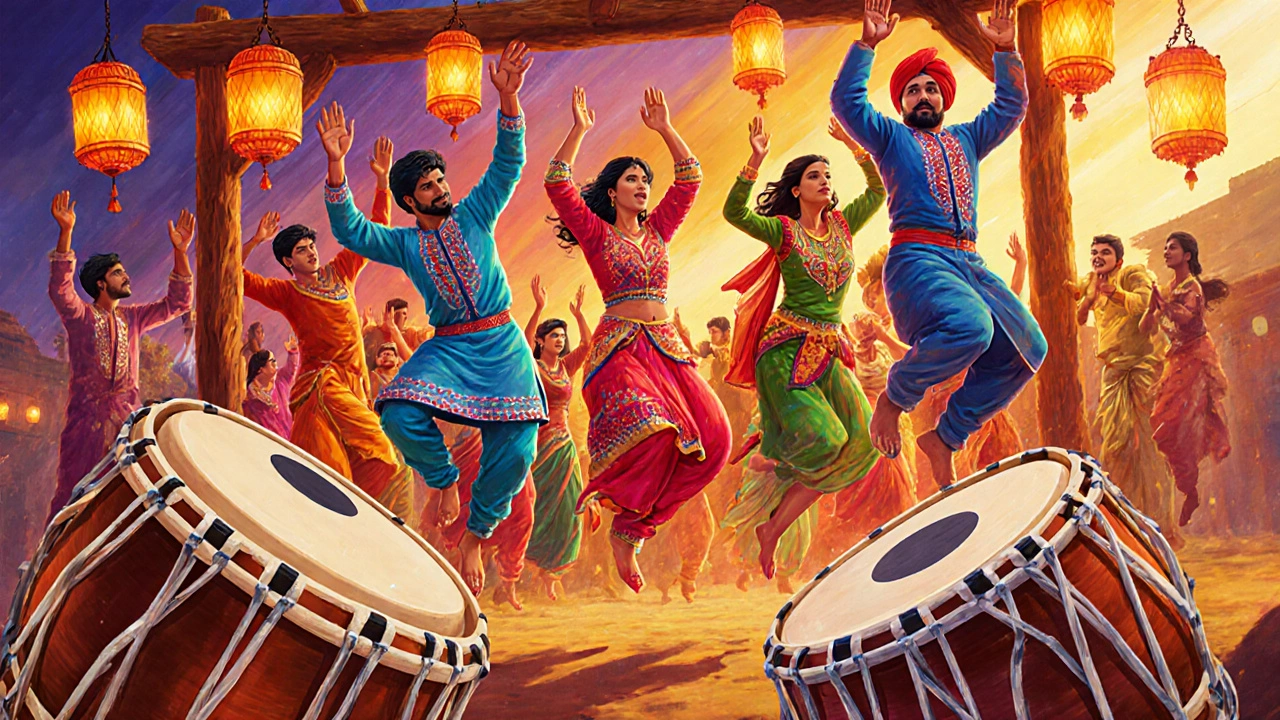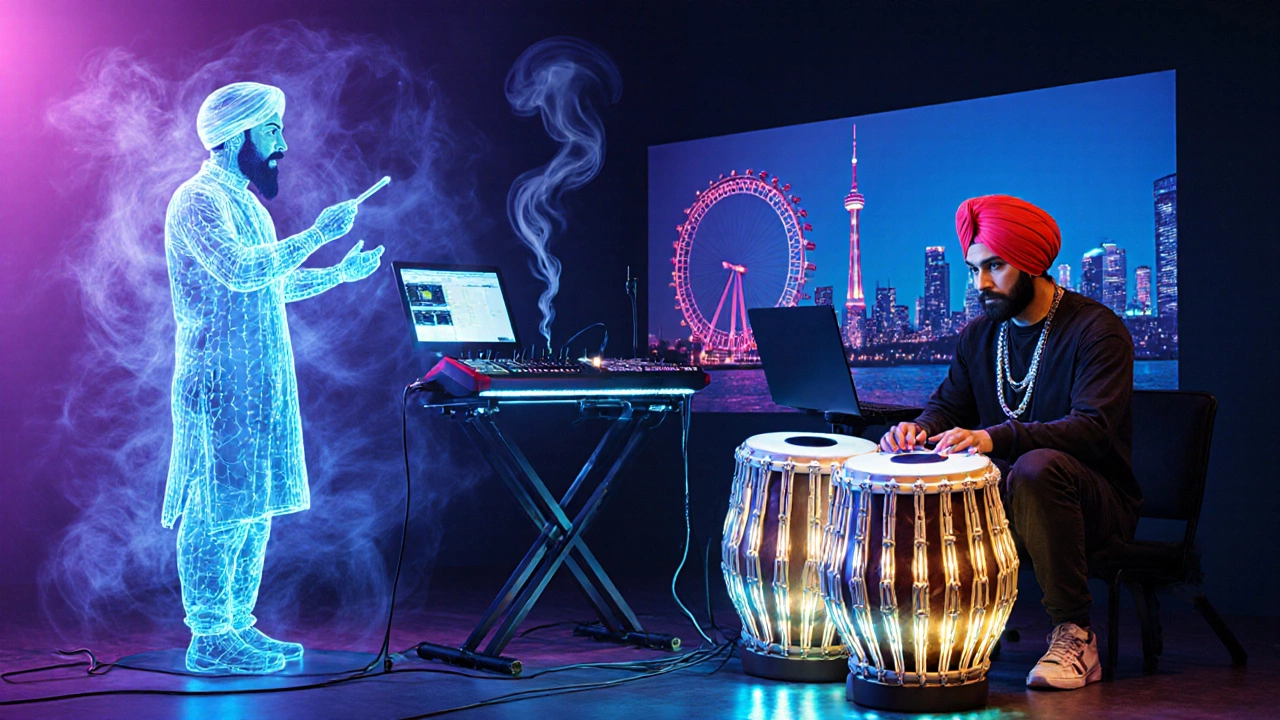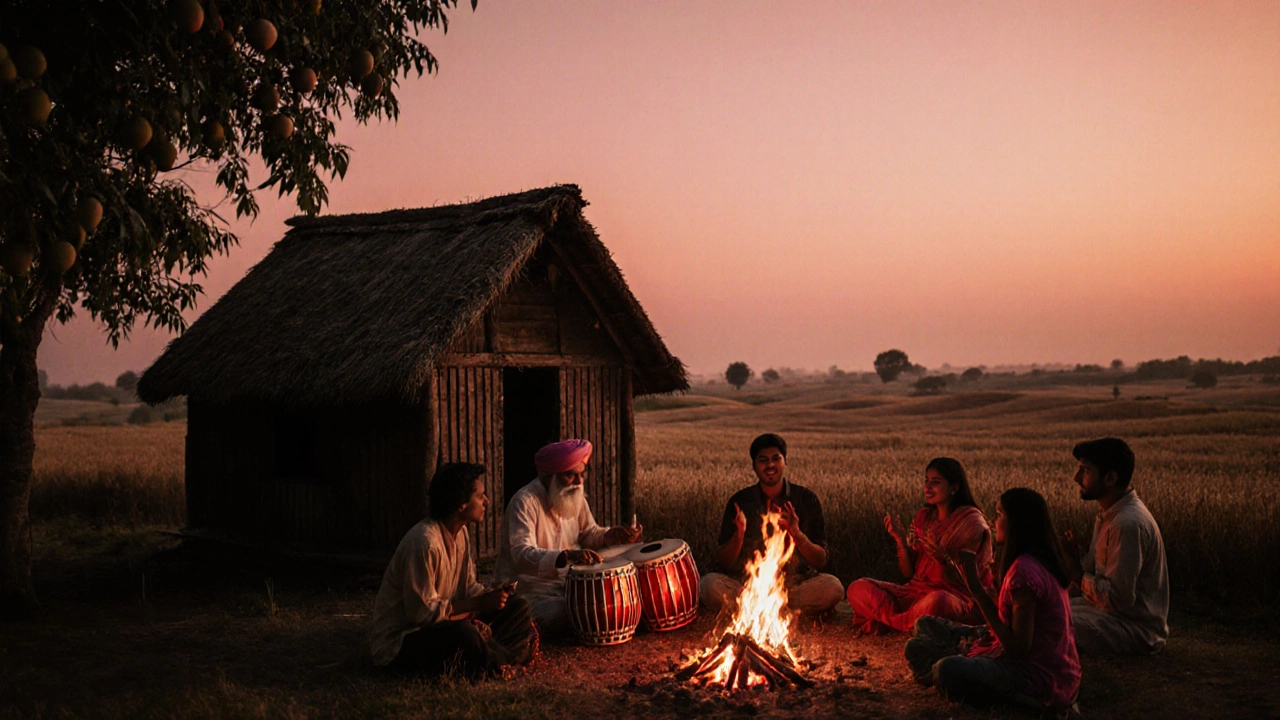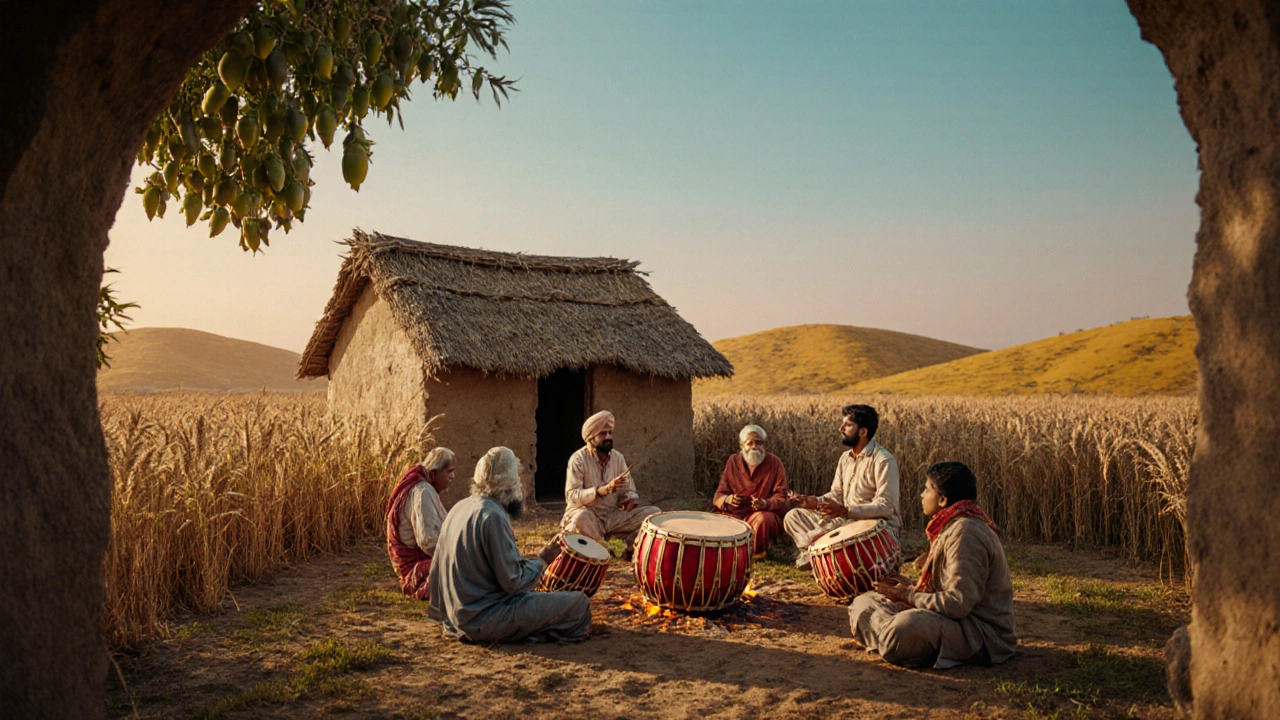Punjabi Song BPM Calculator
Genre Result
Enter BPM to see genre classification
Select a BPM to see details about your song's genre
Examples: Sufi - "Saadiyaan", Giddha - "Challa", Bhangra - "Lahore"
When you hear a catchy rhythm, a lively beat, and lyrics that celebrate everyday life, you’re probably listening to a Punjabi song. Punjabi songs are the soundtrack of the Punjab region - a place where fields stretch far, festivals roar, and families gather around a fire to sing together.
Defining a Punjabi Song
At its core, a Punjabi song is a musical composition sung in the Punjabi language, rooted in the cultural traditions of Punjab (now split between India and Pakistan). It can be folk, devotional, or even pop, but the thread that runs through all of them is a distinctive melodic structure and a strong emphasis on rhythm. Whether it’s a wedding hymn, a harvest chant, or a party anthem, the song always reflects the region’s love for celebration and storytelling.
Historical Roots
Punjabi music has been around for centuries. Early forms were carried by traveling minstrels called ‘Sufi alaps’ who sang verses from mystic poets like Bulleh Shah and Shah Hussain. These verses were set to simple drum patterns on the Dhol, a two‑sided barrel drum that still drives modern tracks. Over time, village festivals added dances such as Bhangra and Giddha, turning folk songs into high‑energy performances.
Key Musical Elements
- Language: Most songs use Punjabi, which contains 10‑12 million speakers in India alone. The lyrics often mix romance, heroism, and daily chores.
- Rhythm: The Dhol, Tumbi (a single‑string pluck), and the chimta (metal tongs) create a syncopated, driving beat that makes people want to move.
- Melody: Scales are based on Hindustani ragas but simplified for mass appeal. You’ll hear a lot of pentatonic patterns that sound bright and uplifting.
- Structure: A typical folk tune follows a call‑and‑response pattern - a lead vocalist sings a line, the chorus repeats it, and instruments fill the gaps.

Popular Genres Within Punjabi Songs
Not every Punjabi song sounds the same. Here are three major styles you’ll encounter:
- Bhangra: Fast‑paced, drum‑heavy tracks meant for dance. Originated from harvest celebrations, today it powers everything from club playlists to movie soundtracks.
- Giddha: The female counterpart to Bhangra, featuring rhythmic clapping and witty verses about love and daily life. It often uses lighter instrumentation like the dholak.
- Sufi music: Spiritual songs that quote mystic poetry. The tempo is slower, and the emphasis is on the emotional delivery of the lyrics.
Comparison of Core Punjabi Styles
| Style | Typical Tempo (BPM) | Key Instruments | Common Themes |
|---|---|---|---|
| Bhangra | 120‑150 | Dhol, Tumbi, Chimta | Celebration, pride, love |
| Giddha | 100‑130 | Dholak, Hand claps | Daily life, humor, romance |
| Sufi Punjabi | 70‑100 | Harmonium, Tabla, Sarangi | Spiritual longing, divine love |

Famous Artists and Iconic Tracks
From legends to modern stars, a few names define the soundscape:
- Gurdas Maan - his ballad “Dil Da Mamla” shows how folk storytelling can still feel fresh.
- Surinder Kaur - known as the Nightingale of Punjab, she popularized the classic “Challa” in the 1960s.
- Guru Randhawa - bridges the gap between traditional Bhangra beats and global pop, as heard in “Lahore”.
- Sidhu Moose Wala - combines rap with folk hooks, the track “So High” illustrates the genre’s evolution.
How Punjabi Songs Evolve Today
Technology and diaspora have pushed Punjabi music beyond village squares. You’ll find:
- Electronic production - synthesizers and digital samples now sit alongside the Dhol.
- Cross‑genre collaborations - Western pop, hip‑hop, and EDM producers remix classic tracks for global streaming platforms.
- Online tutorials - Young musicians learn to play the Tumbi or create beats on YouTube, keeping the tradition alive.
- Regional pride - Even in Canada, the UK, and Australia, Punjabi communities celebrate their roots with local festivals and live performances.

Listening Guide and Tips
If you’re new to the world of Punjabi music, start with a mix of old and new. Play Gurdas Maan’s “Challa”, then jump to a high‑energy Bhangra hit like “Morni Banke”. Notice how the Dhol drives the rhythm and how the lyrics weave everyday stories. If you prefer something mellow, try a Sufi rendition of “Saadiyaan” by the Sabri Brothers - the subtle tabla and soulful voice will give you a taste of the spiritual side.
When you search for a Punjabi song, add the word "lyrics" if you want to follow along, or "instrumental" if you just need the beat for a dance routine. Most streaming services also show the language tag, so you can filter for Punjabi language tracks.
Common Pitfalls to Avoid
- Assuming every Punjabi track is Bhangra - remember the rich tapestry includes lullabies, wedding chants, and Sufi poetry.
- Skipping the cultural context - many lyrics reference harvest seasons, local festivals, or historic heroes; a quick Google search can deepen appreciation.
- Relying on auto‑generated subtitles - they often miss the nuances of Punjabi idioms.
Quick Checklist for Exploring Punjabi Songs
- Identify the sub‑genre (Bhangra, Giddha, Sufi, etc.).
- Listen for signature instruments: Dhol, Tumbi, Tabla.
- Read a translation of the lyrics to catch cultural references.
- Explore the artist’s background - many singers double as poets.
- Enjoy the rhythm - let the beat guide your feet or your mood.
What language are Punjabi songs sung in?
Punjabi songs are primarily sung in Punjabi, the Indo‑Aryan language spoken in the Punjab region of India and Pakistan.
Is every Punjabi song a dance track?
No. While Bhangra is a high‑energy dance style, Punjabi music also includes devotional Sufi songs, lullabies, wedding chants, and storytelling ballads.
Which instruments define a Punjabi song?
The Dhol (large double‑head drum), Tumbi (single‑string pluck), Chimta (metal clappers), and Tabla are the most iconic. Folk versions also use the Dholak and harmonium.
How has modern technology changed Punjabi music?
Digital production lets artists layer electronic beats with traditional drums, while streaming platforms give global audiences instant access. This blend has created hybrid tracks that keep folk roots alive while sounding contemporary.
Where can I find authentic Punjabi songs online?
Major streaming services (Spotify, Apple Music, YouTube) have curated Punjabi playlists. Look for official artist channels or playlists labelled "Punjabi Folk" or "Bhangra Classics" for reliable selections.
